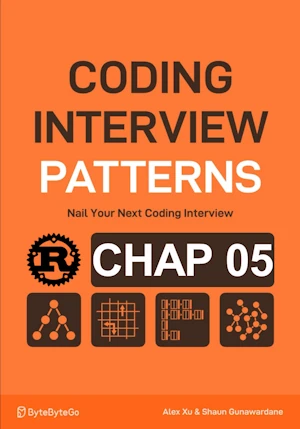Substring Anagrams

- Given 2 strings of lowercase English letters
sandt, return the number of substrings in s that are anagrams of t
The point:
- Working with ASCII only
- In anagrams order of char does’nt matter
- Only the freq of each letter does
Complexity :
| Time | Space |
|---|---|
| O(n) | O(1) |
The comparaison between the 2 freq arrays takes O(1) because they contain 26 elements (?????)
About Rust :
- YES : tested on the Rust Playground
pub fn substring_anagrams(s: &str, t: &str) -> i32 {
let mut count = 0;
let(len_s, len_t) = (s.len(), t.len()); // len works as expected if ASCII
if len_t <= len_s {
let (mut expected_freqs, mut window_freqs) = ([0; 26], [0; 26]);
for c in t.bytes() {
expected_freqs[(c - b'a') as usize] += 1;
}
let s_bytes = s.as_bytes(); // cheap operation, this is just a view of s as u8.
// no shadowing of "s" (let s = s.as_bytes()) because I want to be explicit
let mut left = 0;
for right in 0..len_s {
// add the char at the right pointer to the window_freqs BEFORE sliding the window
let right_char = s_bytes[right];
window_freqs[(right_char - b'a') as usize] += 1;
// if the window size is equal to the length of t, we can start comparing the window_freqs with expected_freqs
if right - left + 1 == len_t {
if window_freqs == expected_freqs {
count += 1;
}
// Remove the char at the left pointer from the window_freqs BEFORE sliding the window
let left_char = s_bytes[left];
window_freqs[(left_char - b'a') as usize] -= 1;
left += 1;
}
}
}
count
}
// fn main(){ // no main() if this code runs in a Jupyter cell
println!("{}", substring_anagrams("caabab", "aba"));
// } // end of local scope OR end of main()
2
Like in the book (p88)
About Rust :
- Use a
whileloop ifexpression and returns 0 upfront- YES : tested on the Rust Playground
pub fn substring_anagrams(s: &str, t: &str) -> i32 {
let(len_s, len_t) = (s.len(), t.len()); // len works as expected if ASCII
if len_t > len_s {
return 0;
}
let mut count = 0;
let (mut expected_freqs, mut window_freqs) = ([0; 26], [0; 26]);
for c in t.bytes() {
expected_freqs[(c - b'a') as usize] += 1;
}
let s_bytes = s.as_bytes();
let (mut left, mut right) = (0, 0);
while right < len_s {
// add the char at the right pointer to the window_freqs BEFORE sliding the window
let right_char = s_bytes[right];
window_freqs[(right_char - b'a') as usize] += 1;
// if the window size is equal to the length of t, we can start comparing the window_freqs with expected_freqs
if right - left + 1 == len_t {
if window_freqs == expected_freqs {
count += 1;
}
// Remove the char at the left pointer from the window_freqs BEFORE sliding the window
let left_char = s_bytes[left];
window_freqs[(left_char - b'a') as usize] -= 1;
left += 1;
}
right+=1;
}
count
}
// fn main(){ // no main() if this code runs in a Jupyter cell
println!("{}", substring_anagrams("caabab", "aba"));
// } // end of local scope OR end of main()
2